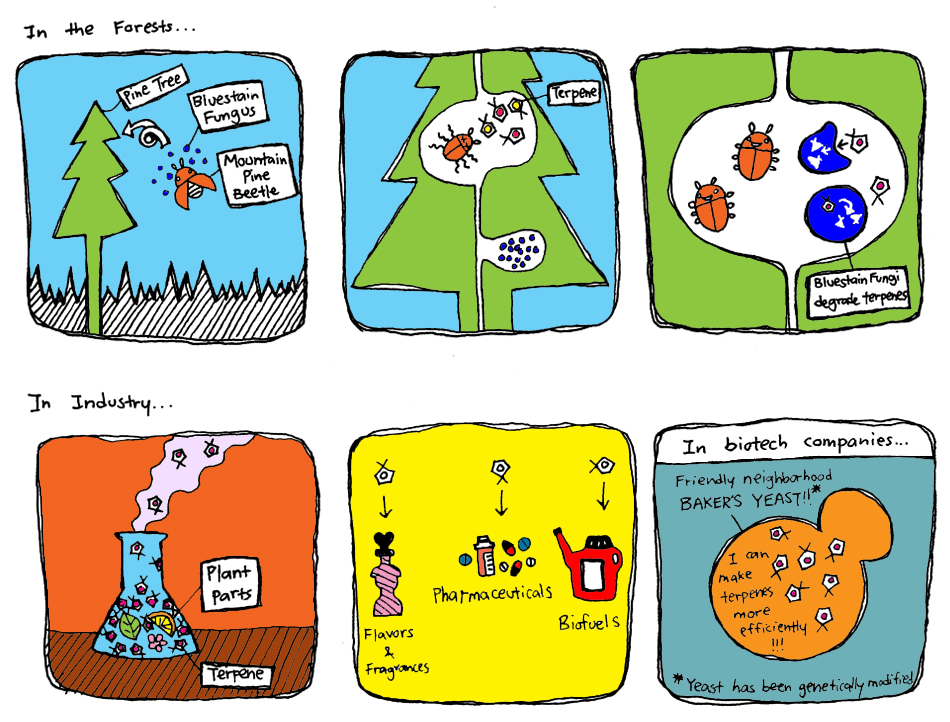Team:British Columbia/Abstract
From 2011.igem.org
(→Abstract) |
|||
| Line 1: | Line 1: | ||
{{Template:Template_HD_1}} | {{Template:Template_HD_1}} | ||
| - | + | <html><center><h3>Abstract</h3></center></html> | |
[[File:ubcigemabstractcomic3.jpg | center ]] | [[File:ubcigemabstractcomic3.jpg | center ]] | ||
| - | + | In nature, monoterpenes are synthesized and secreted by trees as a defense against invading beetles and fungi. The bluestain fungus and mountain pine beetle are in a symbiotic relationship where the fungus deactivates toxic terpenoids and enables the survival of the beetle, which in turn facilitates the spread of the fungus from tree to tree. Meanwhile, from an industrial point of view, various monoterpenes are involved in the production of pharmaceuticals, flavours/fragrances and biofuels. The 2011 UBC iGEM team aims to optimize production of terpenes in Saccharomyces cerevisiae yeast by constructing the biosynthetic pathways necessary to synthesize and retain these compounds. To simulate the system, we are also developing a model of terpene production in yeast using SimBiology Toolkit in MATLAB. In parallel, we are constructing a mathematical model to predict the dynamics of the mountain pine beetle populations in British Columbia, Canada under the influence of our synthetic yeast. | |
Revision as of 03:26, 12 October 2011

Abstract
In nature, monoterpenes are synthesized and secreted by trees as a defense against invading beetles and fungi. The bluestain fungus and mountain pine beetle are in a symbiotic relationship where the fungus deactivates toxic terpenoids and enables the survival of the beetle, which in turn facilitates the spread of the fungus from tree to tree. Meanwhile, from an industrial point of view, various monoterpenes are involved in the production of pharmaceuticals, flavours/fragrances and biofuels. The 2011 UBC iGEM team aims to optimize production of terpenes in Saccharomyces cerevisiae yeast by constructing the biosynthetic pathways necessary to synthesize and retain these compounds. To simulate the system, we are also developing a model of terpene production in yeast using SimBiology Toolkit in MATLAB. In parallel, we are constructing a mathematical model to predict the dynamics of the mountain pine beetle populations in British Columbia, Canada under the influence of our synthetic yeast.
 "
"
